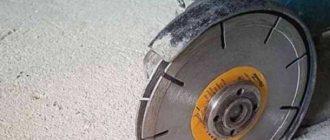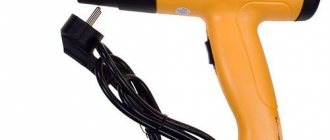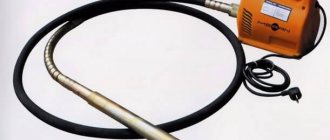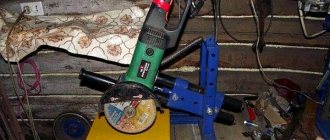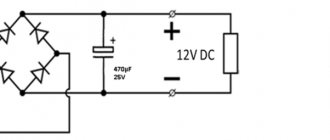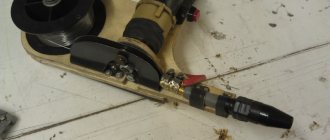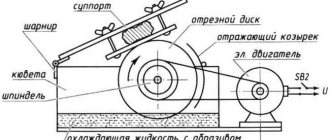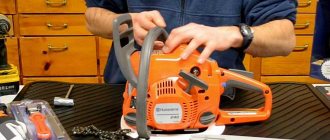Engine types
The possibility of its use at different sites depends on what type is used in this or that equipment.
The cost of a vibrating screed with an internal combustion engine is noticeably higher than that of a power tool. But it is autonomous, which is very convenient in large areas. Compared to their electric counterparts, gasoline models are much more powerful and efficient. However, spent fuel exhaust pollutes the air, so they are not suitable for indoor use. A gasoline vibrating screed must be reliable and powerful enough. On professional equipment, this condition is ensured by the use of original engines of Japanese brands Honda and Mitsubishi.
A floating vibratory screed for compacting concrete with an electric drive is simple and can be easily made with your own hands if you have a motor with a power of up to 1.5 kW at hand. This will be enough for laying and leveling screeds up to 200 mm thick.
You can buy a universal vibrating screed, adapted to work with both an electric and gasoline engine.
To make a vibrating screed with your own hands, you will need:
- motor with starter;
- vibration installation;
- metal fittings, corners;
- corner profile 75 mm, channel or pipe with a diameter of 40 mm as a rule;
- three-phase power cable and rubber for insulating handles;
- screwdriver, bolts, wrenches, welding machine.
Read also: How to hold a hammer correctly
To make the slats, it is better to take a pipe, since in this case the tool can be moved during installation in both directions, rather than unfolding the entire structure.
1. Weld a frame from a pipe, connecting individual pieces by welding with preliminary cutting at 45°. You can simply weld them at right angles to each other or in parallel through several rigid jumpers, but you will have to put plugs on the ends so that the solution does not clog inside.
2. Bend the handles from the reinforcing bars and weld them to the rail profile. Cover the opposite end of the reinforcement with thick porous rubber to reduce the effect of vibrations on humans.
3. Weld a small sheet metal platform for the motor between the profile guides.
4. Install the motor in the center and secure it with a pair of corners. In this case, you need to try to maintain symmetry as accurately as possible, otherwise the process will turn into hard labor due to poor controllability.
5. Having centered the engine along two axes, make markings on the site and mount the vibrator, securing it with bolts and spring washers (grovers).
6. Mount the motor starter on the frame, or better yet, on one of the handles, securely attaching the wire to the fittings.
You can make your work much easier by finding a ready-made platform vibration motor. If you don’t want to assemble a homemade unit, it’s easier to buy a vibrating screed in a store and use it.
The prices for narrow-profile tools cannot be called moderate; only a simple electric vibrating screed is relatively affordable. Therefore, when purchasing, you need to take into account all the nuances of the upcoming work, so as not to make a mistake with your choice. It is especially worth paying attention to the presence of an adjustable frequency converter. With its help, the frequency of vibration is changed to lay mortar of different densities.
In cases where the area of the surface to be treated may vary, it is better to pay more and purchase a telescopic rail.
The reliability of a concrete coating depends not only on high-quality building materials and the correct proportions of the mixture. Maximum strength and durability of the screed is given by thorough compaction. Air cavities and voids in the frozen mass will reduce the quality and shorten the period of use.
When pouring a small platform or formwork for an outbuilding, air is released by piercing the cement mass with a pin (for example, a piece of rebar). But when installing a floor in a room, laying a road surface, concreting a parking lot or other similar areas, using the manual method is problematic and the high quality of the foundation is not guaranteed. A special bar with a small amplitude of intense vibrations helps to compact the surface on your own faster and easier.
Structures of any power and complexity are effective if concrete is laid and leveled in a layer of up to 20 cm. Screed of greater thickness is compacted layer by layer.
Scope and advantages of vibrating slats
The high efficiency of this tool with a relatively small investment of energy resources and labor makes it indispensable for the device:
- Concrete floors.
- Cement floor screeds.
- Road surfaces.
- Playgrounds.
For your information! Elements made using a hand-held vibrator have increased strength and durability than those built without specialized tools.
Advantages
Working with a vibrating screed has a number of features that distinguish it favorably from other types of vibrating equipment:
- Exceptional ease of operation and maintenance - does not require long-term training or study of technology.
- Compact and therefore not difficult to transport, which facilitates relocation from site to site.
- Good performance when working with dry solutions (mixtures containing no more than 20% water).
- High performance of uniform compaction of concrete pavements with a thickness of 10-30 cm.
- The best leveling result (the absence of any defects on the surface of the structures).
Operating principle and structure of the rack
The vibration screed consists of two elements:
- Rigid, durable frame. Consists of two parallel slats or wide strips made of high-quality alloy steel or thick aluminum. Lightweight aluminum does not corrode, is easier to maintain and lasts a long time. Steel planks are cheaper.
- Vibration system. A gasoline or electric engine drives the frame into asynchronous motion.
The device moves along the plane manually. When the motor starts, a rotational motion is transmitted, causing translational vibrations of the rack. The vibration of the frame compacts the solution, releasing air from the voids. A vibration screed with a gasoline engine is more powerful and efficient than an electric one. But a gasoline-powered unit emits harmful waste products into the environment, so it is recommended to compact concrete indoors using an electrically driven device.
The length of the planks reaches 10 meters, which allows the structure to be used for leveling surfaces of any size. On large areas it is more convenient to compact with an autonomous gasoline engine. The marks left behind are removed with a grinding machine while the cement screed hardens.
Types of vibration devices
Divided into 3 types:
- Floating, non-retractable. The simplest ones, intended for private use. Their power does not exceed 1.2 kW. The area of the compacted surface is limited by the length (no more than 3 meters) of the floating rigidly fixed strip.
- Telescopic, sliding. The devices are practical and versatile, allowing you to compact concrete screeds of any size. When extending, the slats increase the length to 10 meters. The leveling frame of such units consists of two bars. Designed for use by professional builders. Structurally more complex, they cost more than floating models.
- Sectional. The working part is increased by adding additional triangular frames to the rule. Functional, with convenient adjustment.
- Before starting, the tool is carefully checked: the bar must be clean, the fasteners are securely tightened;
- the operating engine must not be touched;
- after turning off the device, the rack is washed with water;
- if necessary, work with a gasoline model indoors, ensure good ventilation;
- The electric motor must be grounded.
Read also: Pipe cutting dies
Prices for vibrating screeds
The table shows the cost of some popular vibrating screed models:
| Brand | Nutrition | power, kWt | Weight, kg | Price, rubles |
| Impulse M35 | Gasoline 0.71 l/hour | 1,3 | 18 | 38 500 |
| TSS-MSD | Gasoline 0.73 l/hour | 1,2 | 13 | 69 400 |
| Masalta MSD4 | Petrol | 1,5 | 12,7 | 54 300 |
| RUSA VMAX (telescopic 4-7 m) | Petrol | 3,9 | 106 | 82 700 |
| TCC BP 2 (2 m) | 380 V | 0,34 | 39 | 13 500 |
| TCC BP 6 (6 m) | 220 V | 0,34 | 61 | 26 500 |
| TCC BP (telescopic) | 220 V | 0,34 | 48 |
Assembling a basic vibration screed with your own hands
To compact a concrete surface in a small room in 30 minutes, a disposable device is assembled from scrap materials. For production you will need:
- A smooth, strong board 3-3.5 cm wide, 25-28 cm long, 50-60 cm long.
- Handle made of a block or pole up to 1.5 m long.
- Drill with button lock.
- Aluminum mounting plates.
The tool is assembled in the following order:
- The surface of the board must be smooth; for this it is cleaned and sanded.
- The drill is fixed with aluminum plates and self-tapping screws on a wooden plank in the middle so that the axis of rotation of the chuck and the center of the board coincide.
- The handle is filed at an angle and similarly secured to the board with an oblique cut.
- A rod with a shifted center of gravity is installed in the drill chuck: a piece of reinforcement, a crooked drill bit, or a clamping key to the chuck.
The button of the drill connected to the network is clamped and fixed. The vibration created by the displaced center of gravity of an object inserted into the chuck is transmitted to the board.
The metal profile is more even and smooth than the board. And the weight and power of the units sold make it possible to use long slats and cover a large area, but for a single use such a vibrating screed will do.
Assembling a metal rail
For many craftsmen, the main difficulty is the lack of a welding machine and skills in handling it. In this case, welding of parts is replaced by a bolted connection.
For production you will need:
- steel channel, profile pipe or aluminum rail of the required length (1.5-2 meters or more);
- 2 corners 4x4 20x25 cm or channel sections;
- 2 pieces of pipe or fittings for handles of a convenient length;
- vibration motor, electric motor or internal combustion engine (for example, from a chain saw or walk-behind tractor, together with a clutch).
- Corners are welded on top of the center of the channel across the strip. The distance between them is determined by the size of the engine. Holes for mounting the motor are drilled and it is installed. The fasteners are tightened thoroughly so that the vibration is transferred to the frame and the motor does not come loose.
- Handles made of the selected material are welded on both sides of the engine. When working with an electrical device, they are isolated and the motor is grounded. Having the appropriate knowledge in electrical engineering, a speed controller is installed on the handle.
Craftsmen who work with concrete know that concrete is quite difficult to process and it is very difficult to create a smooth surface without too many defects. If a vibrating screed is used for laying concrete, the process is significantly simplified and accelerated, and the resulting surface will be much smoother and of higher quality.
The classic version of laying the mixture using a long row requires great physical effort from workers, has a number of difficulties and cannot give a high-quality result.
There are several varieties of this tool. Such devices are not too expensive, but many builders do not want to pay money for them, and using improvised means they build vibrating screeds with their own hands.
Vibrating screed for laying concrete - how to use the device
Compacting and leveling concrete mortar with hand tools is quite difficult. The presence of an electric or gasoline engine greatly simplifies the task; vibrations are generated due to the operation of the engine and the worker makes a minimum of effort.
Working with such a device is simple:
- Before each use, an external inspection of the device is carried out, its serviceability is determined, and possible defects are identified;
- the employee must be dressed in special clothing and rubber shoes;
- the movement of the tool depends on the model - a floating one slides along the surface of the mortar, a dimensional tool moves along guides that are installed before the concrete mortar is poured;
- after pouring the prepared working composition, the device is pulled along the surface, the resulting pits and depressions are sealed with a solution;
- after leveling and compaction is completed, the tool must be thoroughly cleaned of any remaining mixture;
- small irregularities after the concrete has hardened are removed by treating the surface with a grinding machine.
To get the best possible result, compaction should be done slowly, and you should also use proper tools, which can be rented inexpensively from.
For compacting and leveling shallow concrete screeds, a simple tool is often used - a vibrating concrete screed. It can be used both in country construction and on an industrial scale.
A vibrating screed for concrete is used when it is necessary to perform a strong and even concrete pour. For example, during such work:
- installation and restoration of cement road surfaces;
- laying low-flow solutions with a water content of up to 20%;
- pouring floors;
- concreting sites for various purposes (ramps, parking lots, parking lots);
- preparation of fresh screed for facing with floor tiles (ceramic, composite, stone) and the actual installation.
Read also: Anchor bolt with washer
At the same time, heavy-duty concrete requires massive equipment, while lightweight models are suitable for regular mixtures. Vibrating mops are a separate group - a tool for finishing surface leveling.
In fact, a vibrating lath for laying concrete is a kind of rule, similar to plastering. However, concrete screed is a rather heavy material, so simple mechanical action is not enough. For effective leveling, the tool is additionally equipped with a vibration mechanism driven by a motor.
Vibrations from the unbalancer are transmitted to a long flat rail in contact with the mortar poured into the formwork. Under its influence, excess air is removed from the upper layers of concrete, and the mixture itself is compacted. Additionally, the surface of the composition is smoothed.
For the vibrating screed to work effectively, before pouring concrete, it is advisable to install guide beacons along which the tool will move during the laying process. The cement-sand mortar must completely cover them before compaction. And if, when passing the site, the concrete sinks below the level of the beacons, it is simply thrown over with a shovel.
The result is a high-quality cement coating with high mechanical strength, increased frost resistance by 20-30% and a long service life.
Structurally, vibratory screeds for laying concrete are divided into only three types:
1. Fixed, floating - the simplest tool for household use.
Their scope of application is limited by the length of a rigidly fixed or floating rail (up to 3 m), but you can buy equipment with interchangeable nozzles of different lengths. The power of vibrating laths with a constant configuration does not exceed 1.2 kW. The cheapest units are from domestic manufacturers: Krasny Mayak (EV series) and TSS.
2. Sliding or telescopic - this solution makes the tool practical and versatile, allowing for laying and compacting concrete in any area.
Retractable elements increase the working length of the vibrating screed to 10 m. As a rule, such models have a double leveling frame. Produced by companies specializing in professional equipment - Euroscreed, Masalta.
3. Sectional – increasing the length of the working part of the vibrating screed is carried out by adding additional sections to the rule.
They are triangular frames bolted to a stacked structure. In addition, such models are distinguished by high functionality and a convenient adjustment system.
The cost of sliding slats is higher than floating slats, since they are more complex in design. Sectional options are intended for industrial use, which is why their price is the highest.
There are also differences in vibrating slats profiles. For production, a steel channel or chamber aluminum profiles connected in pairs are used. Non-corrosive aluminum is lighter, more durable and easier to maintain. But steel is cheaper, which is much more important when the volume of work is small. Also, instead of one rule, there may be a double frame structure, with the help of which concrete laying and leveling are carried out faster.
Features of using the device
A vibrating screed is a device that passes over the surface of the concrete being laid and performs several important tasks at once:
- Tamping the mixture, making the future coating more durable.
- Compaction of the solution - it contains a large amount of air impurities that require removal.
- Leveling the surface.
As a result, the structure of the concrete surface will be of higher quality and more durable.
This treatment of concrete makes it possible to achieve good performance characteristics of the future coating and remove possible voids, water and air bubbles from it. After vibrating lath, the coating is completely ready for finishing: laying tiles, laminate, linoleum, heated floors and other options.
Read also: Router for end mills
The product is used in private construction and on an industrial scale.
With its help, the following are built:
- bridges;
- hydraulic structures;
- overpasses;
- floors;
- blind areas;
- foundations and other similar objects.
Typical design and operating principle
The main components of the device in question are the following:
- Working frame - it is in direct contact with the concrete surface.
- Vibrator - attached to the frame and creates intense vibration movements, which perform the function of tamping and compaction.
- Motor - sometimes the vibrator is pre-mounted with it.
- Handles with which the vibrating screed is controlled.
- All handles are covered with vibration-absorbing material, otherwise working with the device will be very uncomfortable.
If a person has all the specified components, then creating a vibrating screed for processing concrete with your own hands will not be a big problem.
The device works simply - the engine drives a vibrator, which transmits its movement to the working frame. The frame itself is in contact with the surface being processed and transmits the generated vibrations to it.
The vibrator itself functions thanks to the presence in its structure of a special part - an eccentric, which creates powerful frequency vibrations that are transmitted to the frame. The higher the vibration frequency and the slower the surface is processed, the denser and better quality it will be.
Homemade vibrating screed for concrete
Classification
There are several varieties of the construction tool in question. The device operates either from an electric motor or a gasoline engine.
Each of the options is advantageous depending on the situation in which you have to work. Electric units are more expensive and are actively used when carrying out work in enclosed spaces, where the exhaust of used gasoline would have a very bad effect on the working atmosphere.
Gasoline options are more affordable and are used outdoors or in well-ventilated areas.
If we talk about the design features of vibrating slats, they come in several types.
Floating
They are capable of working through a layer of material up to 15 centimeters thick, and also covering a working area of up to 3 meters in one pass. Such vibrating screeds have a light weight of 15–25 kilograms, and the engine power here is in the range of 1–1.5 kW.
Double telescopic
The characteristics are similar to the previous version, but are capable of capturing a large surface for processing - 4–5 meters.
Sectional
Large vibrating screeds and units are widely used on industrial-scale construction sites. Such a product is capable of covering the length of the treated surface up to 25 meters, has a powerful 3 kW engine, and perfectly compacts concrete to a thickness of about 10–15 centimeters.
Sliding
In this type of device, the frame consists of a pair of sliding profiles, which, if necessary, extend and can cover a large area for processing. They are used on pre-installed guides.
The principle of operation of the vibrating screed
The principle of operation of all types of equipment is that vibrations are created in the device, which are transmitted to the concrete surface, as a result of which air bubbles are removed and the layer is compacted. Mechanical vibrations are created as a result of starting an engine - electric or gasoline type.
Due to the vibration load, the unit moves, which reduces the effort exerted by the worker. Models with an asynchronous three-phase motor are used when there is an electrical network; they can be used in enclosed spaces since they do not produce exhaust gases. Gasoline modifications are autonomous and are most often used on large construction sites.
Method of performing vibroslating at home
To make a vibrating screed for laying concrete yourself, you need to acquire the necessary parts.
To fasten spare parts together, you should use a welding machine or other available options for creating fasteners.
Handles can be easily made from pieces of reinforcement or small diameter pipes. The build process looks like this:
- Two corners are connected to a channel of the required size (it will act as a frame).
- The handles of the device need to be attached to the channel. Their length should be sufficient for comfortable work.
- The engine is also mounted on a channel, usually in the middle.
It would be nice to use aluminum to create the frame; it is not subject to corrosion and is lightweight. Creating a vibrating screed for laying concrete is not an easy task, but it is quite within the capabilities of the average person.
Making a unit for treating concrete surfaces is not that difficult. Using a store-bought device will definitely be more pleasant, but a homemade version, if executed correctly, can easily cope with the tasks assigned to it.
The power of the selected motor must be sufficient to create high frequency oscillations. To get an even and compacted coating, you need to move the lath slowly, pay attention to problem areas on the concrete surface, and periodically clean the working frame from material that will stick to it.
Related video: Vibrating screed for laying concrete
Vibrating screed device for concrete
The equipment design includes the following components and parts:
- durable frame that directly impacts the surface;
- vibrator with a shifted center of gravity;
- engine;
- handles.
The working element consists of interconnected profiles. The rotating motor shaft acts on the vibrator, causing it to vibrate, which is transmitted to the frame.
Depending on the design features, the following vibration screeds are distinguished:
- with double durable frame;
- with telescopic frame;
- sectional models.
The device should be operated taking into account the following recommendations:
- before use, the serviceability of the equipment is checked, the worker prepares rubber boots and gloves to protect against electric shock;
- the floating tool must slide along the surface, massive equipment is installed before pouring the concrete solution, which must be below its level;
- guide elements must be positioned strictly in a horizontal plane;
- after starting the equipment, the rail is pulled along the guides using cables;
- when depressions form, they are sealed with mortar;
- After completion of work, the tool is thoroughly cleaned of the mixture.

